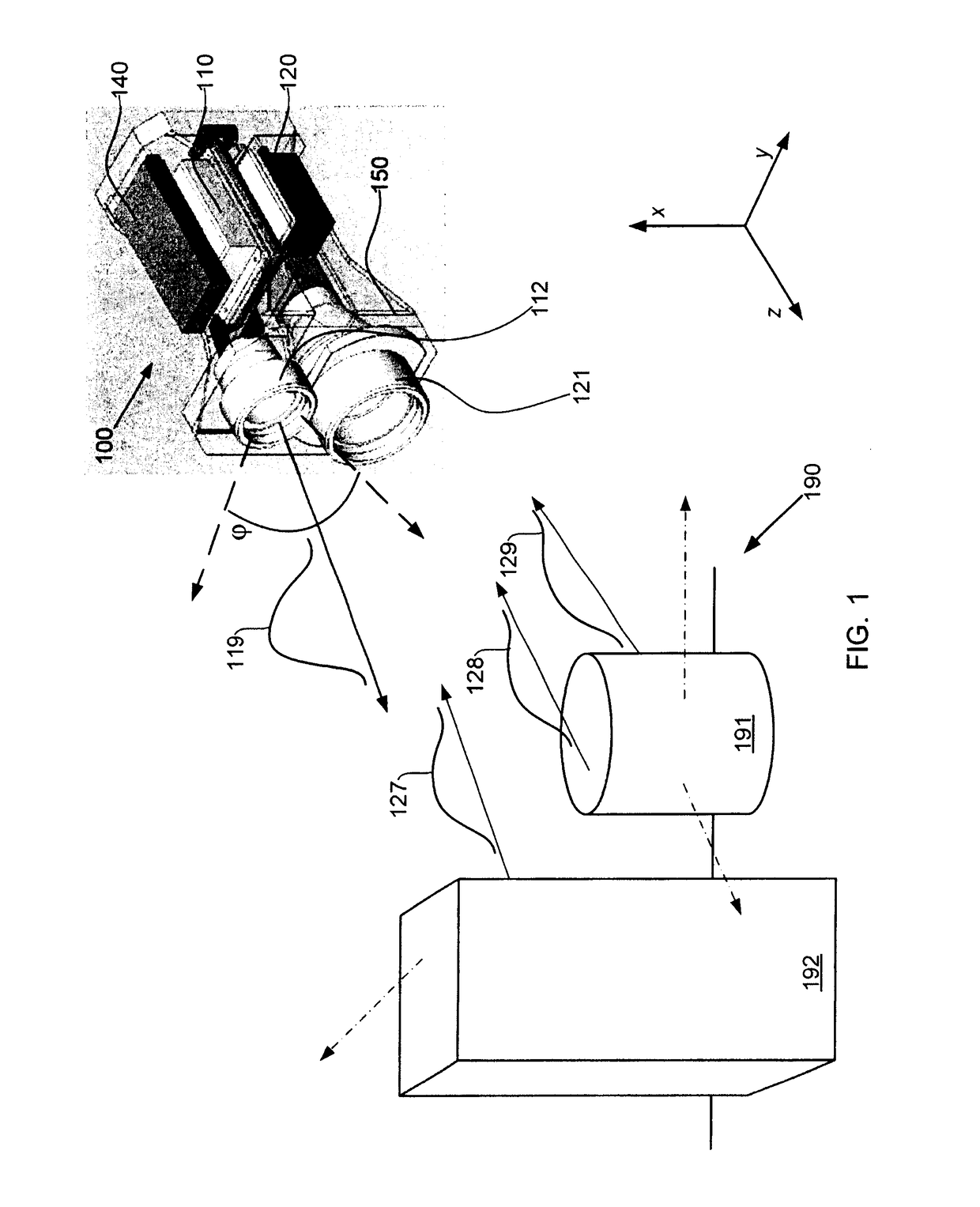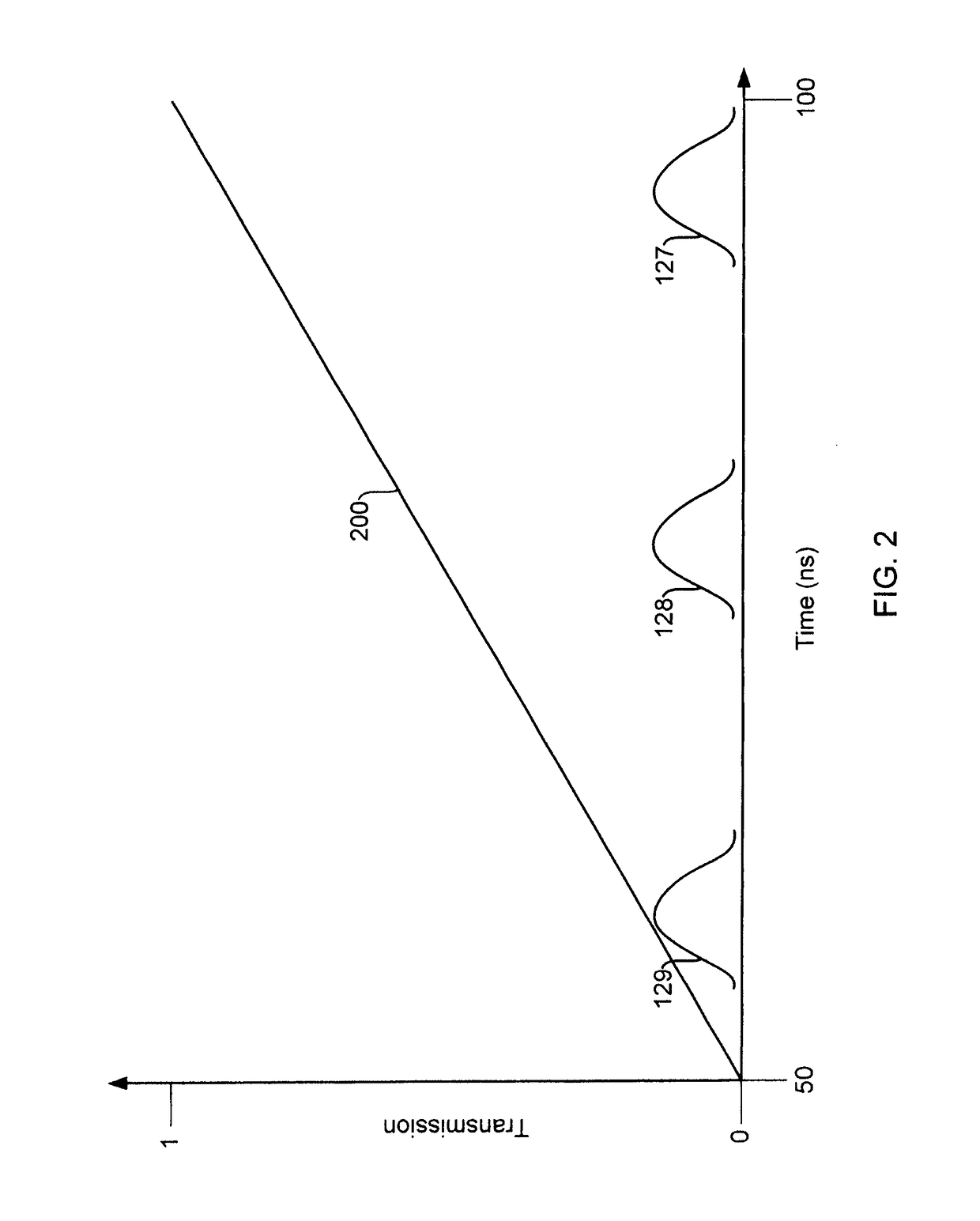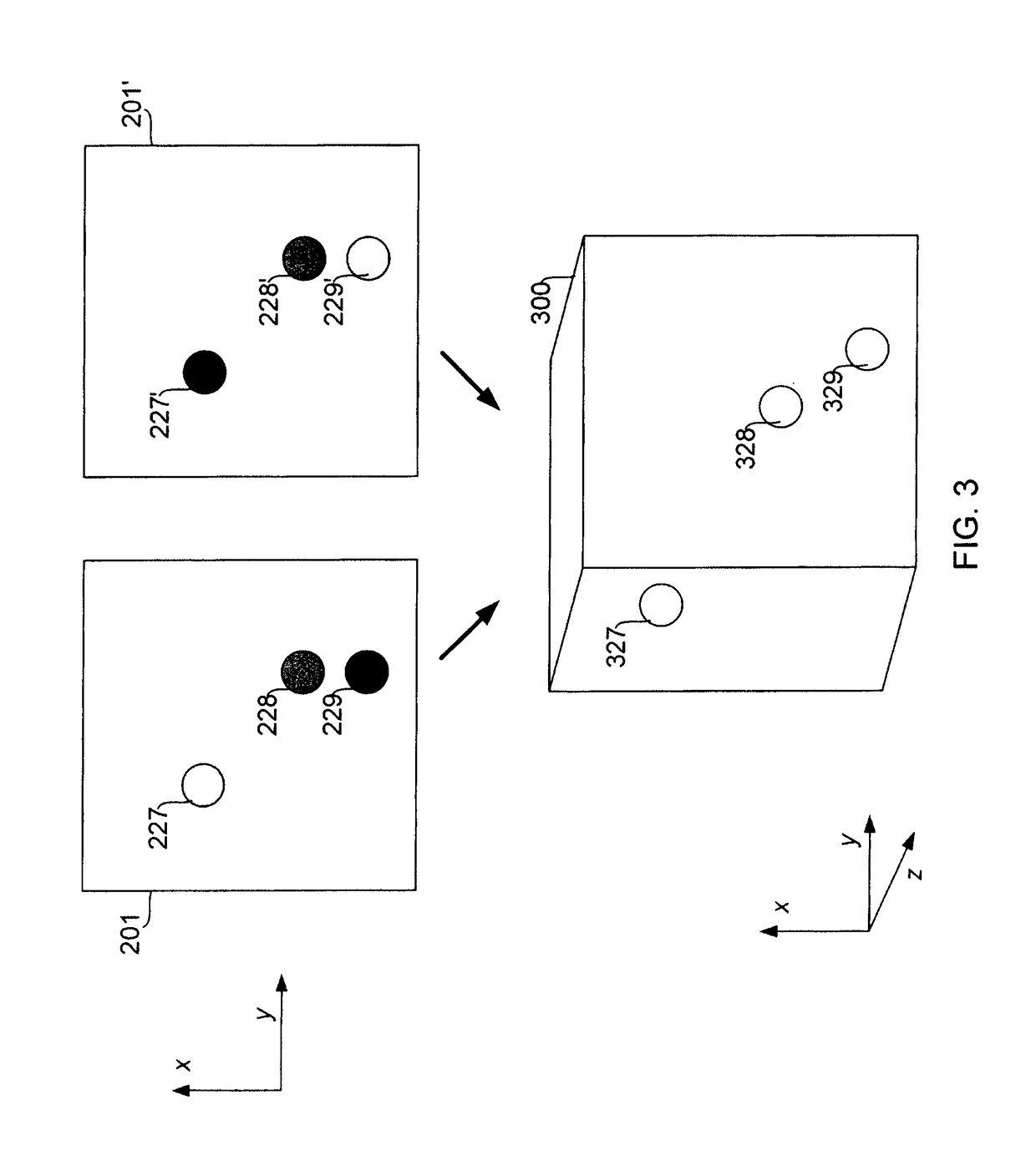Systems and methods of high resolution three-dimensional imaging
a three-dimensional imaging and high-resolution technology, applied in the field of three-dimensional imaging systems and methods, can solve the problems of inability of fpas by nature to detect color, inability of fpas to obtain information about the distance (z) of an object from the fpa, and inability to use complex, high-speed, expensive read-out circuits, etc., and achieve high-resolution results
- Summary
- Abstract
- Description
- Claims
- Application Information
AI Technical Summary
Benefits of technology
Problems solved by technology
Method used
Image
Examples
Embodiment Construction
1. Overview
[0050]Embodiments of the invention provide systems and methods for obtaining high resolution images of scenes, including wide field of view scenes. Specifically, the systems and methods may simultaneously record three dimensional position information for multiple objects in a scene with high spatial and distance resolution, along with intensity (grey-scale or color) information about the scene. This information, both coordinate and intensity, is recorded for every pixel in an array of pixels for each image. The intensity and position information are combined into a single three-dimensional image that approximates a human view of the scene, and which further records the three-dimensional coordinates of the shape and relative position of each object in the scene. A series of such images may be acquired in similar fashion to a digital video camera, providing a “movie” of changes in the scene over time, each three-dimensional image in the movie being referred to as a frame. I...
PUM
 Login to View More
Login to View More Abstract
Description
Claims
Application Information
 Login to View More
Login to View More - R&D
- Intellectual Property
- Life Sciences
- Materials
- Tech Scout
- Unparalleled Data Quality
- Higher Quality Content
- 60% Fewer Hallucinations
Browse by: Latest US Patents, China's latest patents, Technical Efficacy Thesaurus, Application Domain, Technology Topic, Popular Technical Reports.
© 2025 PatSnap. All rights reserved.Legal|Privacy policy|Modern Slavery Act Transparency Statement|Sitemap|About US| Contact US: help@patsnap.com



